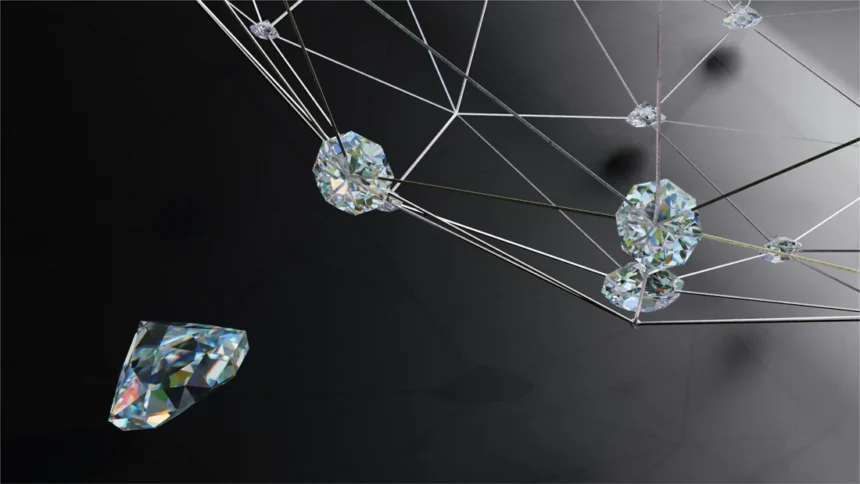In the ever-evolving world of luxury jewelry, lab-grown diamonds are rapidly gaining popularity as an ethical and sustainable alternative to traditional mined diamonds. As consumers become more conscious of environmental and social issues, the demand for diamonds that don’t carry the heavy ethical and environmental footprint of mined stones is increasing. Lab-grown diamonds offer the same brilliance, beauty, and durability as natural diamonds but are produced in controlled lab environments, offering a more sustainable option for modern buyers.
This shift toward lab-grown diamonds is driven by multiple factors, including sustainability, affordability, and the growing desire to make more informed and responsible purchasing decisions. Why choose Labrilliante for lab-grown diamonds? This is a question many consumers are asking as they seek out high-quality, ethical diamonds. In this article, we will delve into the benefits of lab-grown diamonds and why they are quickly becoming the preferred choice for today’s jewelry buyers.
What Are Lab-Grown Diamonds?
Lab-grown diamonds, also known as synthetic or man-made diamonds, are created using advanced technological methods such as Chemical Vapor Deposition (CVD) or High Pressure High Temperature (HPHT). These methods replicate the natural diamond formation process, creating diamonds that are virtually identical to mined diamonds in terms of their physical, chemical, and optical properties.
The key difference is the environment in which they are created. While natural diamonds form deep within the Earth over millions of years, lab-grown diamonds are produced in weeks or months in laboratories that mimic these high-pressure, high-temperature conditions. As a result, lab-grown diamonds are not only sustainable but also offer consumers a beautiful and ethical choice.
Why Lab-Grown Diamonds Are Gaining Popularity
1. Sustainability and Environmental Impact
One of the major reasons lab-grown diamonds are gaining traction is their lower environmental impact compared to mined diamonds. Traditional diamond mining is known for its destructive impact on ecosystems, including deforestation, soil erosion, and water pollution. The process of extracting diamonds from the Earth is resource-intensive and leaves a large carbon footprint.
In contrast, lab-grown diamonds are produced in a controlled environment, requiring less energy, water, and land compared to mining. The carbon emissions associated with lab-grown diamond production are significantly lower, making them a more eco-friendly choice for environmentally conscious consumers. As concerns about climate change and environmental preservation continue to rise, choosing lab-grown diamonds is a step toward reducing the jewelry industry’s overall environmental impact.
2. Affordability Without Compromising Quality
Another key advantage of lab-grown diamonds is their affordability. Lab-grown diamonds typically cost 20-40% less than their mined counterparts of similar size and quality. This price difference makes luxury diamond jewelry more accessible to a wider range of consumers while maintaining the same level of brilliance and durability.
Lab-grown diamonds are graded by the same standards as natural diamonds, ensuring they meet the highest quality criteria. Whether you are looking for a stunning engagement ring or a sophisticated necklace, lab-grown diamonds offer a luxurious option at a more affordable price point.
3. Ethical Sourcing and Transparency
Ethical concerns related to traditional diamond mining have long been a point of contention in the industry. The term “blood diamonds” refers to diamonds that are mined in war zones and sold to finance conflict, leading to human rights abuses. In addition to the ethical issues surrounding conflict diamonds, traditional mining practices are also associated with poor labor conditions and exploitation of workers.
Lab-grown diamonds provide an ethical alternative, as they are created in controlled environments that do not involve harmful labor practices or contribute to conflicts. This is a key reason why more consumers are opting for lab-grown diamonds—there is peace of mind in knowing that the diamond they are purchasing is conflict-free and ethically sourced.
How Lab-Grown Diamonds Are Changing the Jewelry Industry
The rise of lab-grown diamonds has forced many traditional jewelry brands to reevaluate their practices and embrace sustainability. Jewelry retailers are now offering a growing selection of lab-grown diamond jewelry, recognizing the growing consumer demand for ethical and environmentally friendly options. Lab-grown diamonds are no longer seen as a novelty but as a mainstream choice for those who want to make a positive impact with their luxury purchases.
From engagement rings to earrings, necklaces, and bracelets, lab-grown diamonds are being integrated into all types of jewelry. This trend is driven by the desire for high-quality, sustainable pieces that align with personal values. The availability of lab-grown diamonds has democratized the luxury jewelry market, making it easier for consumers to access diamonds that align with their ethical and environmental preferences.
Why Choose Lab-Grown Diamonds?
1. Identical to Mined Diamonds
Lab-grown diamonds are chemically, physically, and optically identical to mined diamonds. They exhibit the same sparkle, fire, and brilliance, and are graded using the same standards. A lab-grown diamond is just as durable as a mined diamond, and they come in a variety of shapes, sizes, and colors to suit every taste and preference.
The only notable difference between lab-grown and mined diamonds is their origin. While mined diamonds take millions of years to form, lab-grown diamonds are created in a matter of weeks in a laboratory. Despite the difference in their formation process, lab-grown diamonds offer the same timeless beauty and luxury as their natural counterparts.
2. Customization and Personalization
Lab-grown diamonds offer consumers the opportunity to create truly unique and personalized jewelry pieces. Many retailers allow customers to select the specific diamond cut, color, clarity, and carat weight to design a one-of-a-kind piece of jewelry. Whether you’re designing an engagement ring, anniversary gift, or special piece of jewelry, lab-grown diamonds provide endless options for customization.
3. Longevity and Durability
Lab-grown diamonds are as durable as mined diamonds, making them a lasting investment. With proper care, a lab-grown diamond can last a lifetime, passing down through generations as a family heirloom. They are resistant to scratches, chips, and other forms of damage, ensuring that your diamond retains its brilliance and beauty over time.
Conclusion
Lab-grown diamonds represent the future of luxury jewelry, offering an ethical, sustainable, and affordable alternative to traditional mined diamonds. As more consumers seek out eco-friendly and socially responsible options, the popularity of lab-grown diamonds will continue to rise. Whether you’re purchasing an engagement ring, wedding band, or a special piece of jewelry, lab-grown diamonds provide an excellent choice for those who want to combine beauty with responsibility.
With their growing popularity, lab-grown diamonds are reshaping the jewelry industry, offering a more sustainable and ethical option for today’s consumers. So, when considering your next diamond purchase, consider the many advantages of lab-grown diamonds and choose a piece of jewelry that not only sparkles but also reflects your values.


